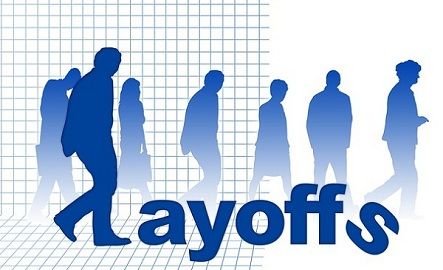
The biggest difference between layoff and retrenchment is that layoff is volatile in nature, i.e. employees are recalled, once the period of layoff is over while retrenchment is non-volatile i.e. that involves full and final termination of services.
The employment contract is terminated with the employees by the employer, due to three major reasons which are: (i) the organization is going through the lean period, (ii) initial faulty hiring, (iii) employee shows deviant behavior, which affects the whole environment.
The method used in involuntary separation is layoffs, VRS, Retrenchment, discharges etc. Many think that layoff and retrenchment are one and the same thing but that is not true.Read the article to learn some more differences between these two.
Content: Layoff Vs Retrenchment
Comparison Chart
| Basis for Comparison | Layoff | Retrenchment |
|---|---|---|
| Meaning | Lay-off refers to the provisional termination of the employee, at the instance of the employer. | Retrenchment means involuntary separation of an employee due to the replacement of labor by machines or the close of the department. |
| What is it? | Action step | Business strategy |
| Defined in | Section 2 (kkk) of Industrial Dispute Act, 1947 | Section 2 (oo) of Industrial Dispute Act, 1947 |
| Nature | Temporary | Permanent |
| Operation of company | Stops after the declaration. | Continues even after the declaration. |
| Re-appointment | As soon as the lay-off period ends. | Employee's connection with the organization are severed immediately. |
Definition of Layoff
To layoff is to temporarily or permanently terminate or get rid of the staff / employee. This is usually done by a company / firm on account of a business slowdown as a result of which there is insufficient work to be allotted to an employee who is registered with the establishment and who has not yet been retrenched.
It is Suspension or termination of employment (with or without notice) by an employer or management. A company layoff involves the cessation of employee benefits such as salary or wages. The laid-off employees are paid laid-off compensation. All of the laid-off employees should be taken back in their usual posts, as soon as the layoff lifted out. It may be due to, one of the given reasons:
- Shortage of raw materials
- Economic recession
- Breakdown of machinery
- Accumulation of stocks
Definition of Retrenchment
Retrenchment is to reduce the amount of corporate expenses. When a company/firm implements retrenchment, it cuts off or minimises all the unnecessary expenditures, usually by cutting back on the diversity of products or services it offers and often reducing the size of its company by closing down some of its offices that don’t necessarily mean a reduction in a company’s workforce.
It simply means termination of employee’s services, because of replacement of the worker by machines or closure of the unit due to the lack of product’s demand, produced by the unit. In retrenchment, the termination of services of several employees takes place where they are sent to the home and their connection with the organisation are completely and immediately severed.
Key Differences between layoff and retrenchment
- Layoff refers to the provisional termination of the employee, at the instance of the employer. Retrenchment means involuntary separation of an employee due to the replacement of labour by machines or the close of the department.
- The layoff is an action step, whereas retrenchment is a business strategy to reduce company’s expenses.
- The layoff is defined in section 2 (kkk) of the Industrial Disputes Act, 1947. Conversely, Retrenchment is defined in section 2 (oo) of the Industrial Disputes Act, 1947.
- The layoff is of a temporary nature, i.e. it is for a definite period, in which the employees are recalled after the expiry of the term. As opposed to retrenchment, is permanent in nature.
- After the declaration of layoff, the company’s operations stops because of the shortage of raw material, the breakdown of machinery, economic recession and so on. On the other hand, the operations of the company continue even after retrenchment is declared.
- As soon as the layoff period is over, the employees are re-appointed to their previous posts. Unlike Retrenchment, in which the employees are not taken back by the company, once they are terminated.
Conclusion
Therefore, with the above discussion, it is quite clear that layoff and retrenchment are two different ways of involuntarily terminating employees. While in both the cases the employees are paid compensation as per the method specified in the act. However, gratuity is paid only in retrenchment but not in layoff.






Suman Kumari Sharma says
Good Material for law students.
Thank you so much !